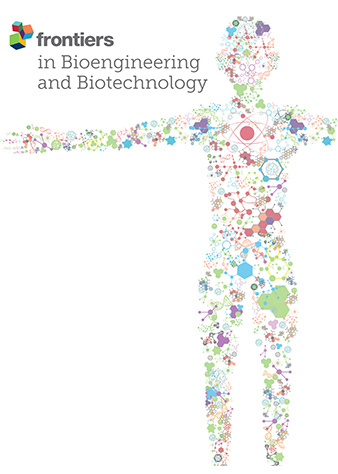纳米药物在前列腺癌诊断和治疗中的应用:最新综述
IF 4.3
3区 工程技术
Q1 BIOTECHNOLOGY & APPLIED MICROBIOLOGY
引用次数: 0
摘要
前列腺癌(PC)是世界上第三大最常见的男性癌症,由于各种突变导致染色质结构丧失而发病。这种癌症有多种治疗方法,其中化疗是最重要的治疗方法之一。有时,为了防止肿瘤复发,会将化疗、放疗和手术等不同治疗方法结合起来使用。在其他治疗方法中,值得一提的是雄激素剥夺疗法(ADT),该疗法取得了良好的效果。化疗和 ADT 治疗的缺点之一是不能靶向作用于肿瘤组织。因此,使用它们会产生广泛的副作用。如今,基于纳米材料的治疗方法(即纳米医学)备受关注。纳米粒子(NPs)是纳米医学的主要分支之一,可由聚合物、金属和碳等不同材料制成,每种材料都有其独特的特性。除 NPs 外,纳米微粒(NVs)也可用于治疗 PC。在治疗 PC 时,可使用人工合成的 NV(脂质体、胶束和纳米气泡)或由细胞产生的 NV(外泌体)。除了 NPs 和 NVs 在治疗 PC 方面的作用外,由于它们具有靶向性,还可用于诊断 PC 和检查治疗过程。了解基于纳米药物的治疗方法的特点有助于设计新的治疗方法,提高研究人员对肿瘤生物学及其快速诊断的认识。在本研究中,我们将讨论传统疗法和基于纳米药物的疗法。这些研究结果表明,将 NPs 和 NVs 与传统治疗方法结合使用,比单独使用每种方法治疗肿瘤的疗效更高。本文章由计算机程序翻译,如有差异,请以英文原文为准。
Nanomedicines in diagnosis and treatment of prostate cancers: an updated review
Prostate cancer (PC) is the third most common male cancer in the world, which occurs due to various mutations leading to the loss of chromatin structure. There are multiple treatments for this type of cancer, of which chemotherapy is one of the most important. Sometimes, a combination of different treatments, such as chemotherapy, radiotherapy, and surgery, are used to prevent tumor recurrence. Among other treatments, androgen deprivation therapy (ADT) can be mentioned, which has had promising results. One of the drawbacks of chemotherapy and ADT treatments is that they are not targeted to the tumor tissue. For this reason, their use can cause extensive side effects. Treatments based on nanomaterials, known as nanomedicine, have attracted much attention today. Nanoparticles (NPs) are one of the main branches of nanomedicine, and they can be made of different materials such as polymer, metal, and carbon, each of which has distinct characteristics. In addition to NPs, nanovesicles (NVs) also have therapeutic applications in PC. In treating PC, synthetic NVs (liposomes, micelles, and nanobubbles) or produced from cells (exosomes) can be used. In addition to the role that NPs and NVs have in treating PC, due to being targeted, they can be used to diagnose PC and check the treatment process. Knowing the characteristics of nanomedicine-based treatments can help design new treatments and improve researchers’ understanding of tumor biology and its rapid diagnosis. In this study, we will discuss conventional and nanomedicine-based treatments. The results of these studies show that the use of NPs and NVs in combination with conventional treatments has higher efficacy in tumor treatment than the individual use of each of them.
求助全文
通过发布文献求助,成功后即可免费获取论文全文。
去求助
来源期刊

Frontiers in Bioengineering and Biotechnology
Chemical Engineering-Bioengineering
CiteScore
8.30
自引率
5.30%
发文量
2270
审稿时长
12 weeks
期刊介绍:
The translation of new discoveries in medicine to clinical routine has never been easy. During the second half of the last century, thanks to the progress in chemistry, biochemistry and pharmacology, we have seen the development and the application of a large number of drugs and devices aimed at the treatment of symptoms, blocking unwanted pathways and, in the case of infectious diseases, fighting the micro-organisms responsible. However, we are facing, today, a dramatic change in the therapeutic approach to pathologies and diseases. Indeed, the challenge of the present and the next decade is to fully restore the physiological status of the diseased organism and to completely regenerate tissue and organs when they are so seriously affected that treatments cannot be limited to the repression of symptoms or to the repair of damage. This is being made possible thanks to the major developments made in basic cell and molecular biology, including stem cell science, growth factor delivery, gene isolation and transfection, the advances in bioengineering and nanotechnology, including development of new biomaterials, biofabrication technologies and use of bioreactors, and the big improvements in diagnostic tools and imaging of cells, tissues and organs.
In today`s world, an enhancement of communication between multidisciplinary experts, together with the promotion of joint projects and close collaborations among scientists, engineers, industry people, regulatory agencies and physicians are absolute requirements for the success of any attempt to develop and clinically apply a new biological therapy or an innovative device involving the collective use of biomaterials, cells and/or bioactive molecules. “Frontiers in Bioengineering and Biotechnology” aspires to be a forum for all people involved in the process by bridging the gap too often existing between a discovery in the basic sciences and its clinical application.
 求助内容:
求助内容: 应助结果提醒方式:
应助结果提醒方式:


